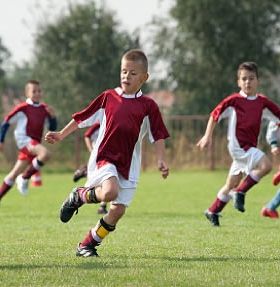Article at a Glance
Recently the American Academy of Neurology released new guidelines for the evaluation and management of sports-related concussions. Parents should become familiar with these guidelines so that if their child experiences a head injury they can make sure it is treated properly. It is also important that your children’s coaches are aware of these guidelines.
A concussion is a traumatic brain injury that is caused by a blow to the head or when the head is violently shaken.
Most of the time people recover fully from a concussion, but if treated improperly it can result in more severe and long-lasting injuries. Regardless of age, type of sport played, or gender, concussions are serious. Every year an estimated 1.6 to 3.8 concussions occur in sports and recreation-related activities. In high schools, about 9 percent of sports injuries involve a concussion.
What Should You Look For?
If your child has suffered a blow to the head, look for some of these signs and symptoms.
What Should I Do if I Think My Child Has a Concussion?
If you believe your child has a concussion, remove your child from the game right away. Allowing your child to continue to play can make the injury worse or make it more likely your child will be injured again. A second injury could result in second-impact syndrome—a catastrophic and potentially fatal swelling of the brain.
If your coach has been properly trained to screen for concussions, your coach can help with the diagnosis and perform some tests. You should also schedule an appointment with your pediatrician so that your child can be thoroughly evaluated. Be sure to share any of your observations and the results of your coach’s tests.
Do not let your child return to play or practice until all the symptoms have been cleared and your pediatrician says that it is okay. Children should not be allowed to return to play the same day the injury occurred even if they feel better on the sidelines. Some symptoms may take hours or days to manifest.
Remember to have your child take it slow. At first avoid any activities that puts your child in danger of another concussion. Teenagers and children also heal more slowly than older athletes, so give them plenty of time.
Is My Child at Risk for a Concussion?
Concussions are most common in sports that are high-speed contact sports like football, rugby, hockey, and soccer. Sports that involve the lowest risk are volleyball, softball, baseball, and gymnastics.
Making sure your child wears a helmet that fits properly and is well designed and maintained can help reduce the risk of concussions.
If your child has had a concussion before, there is strong evidence that he or she is more likely to suffer another concussion—especially during the first 10 days after the first concussion. Many believe that it is because players’ reflexes and brain functions are impaired so that they are more susceptible to injury.
These new guidelines attempt to clear up inconsistencies with how to manage concussions and mild traumatic brain injuries. The previous guidelines had been updated in 1997, and these new guidelines are more in line with the guidelines used by the NFL and other leagues and associations. For more information about the guidelines visit the American Academy of Neurology’s Sports Concussion Toolkit.
